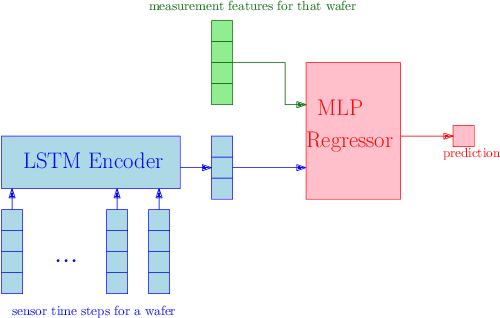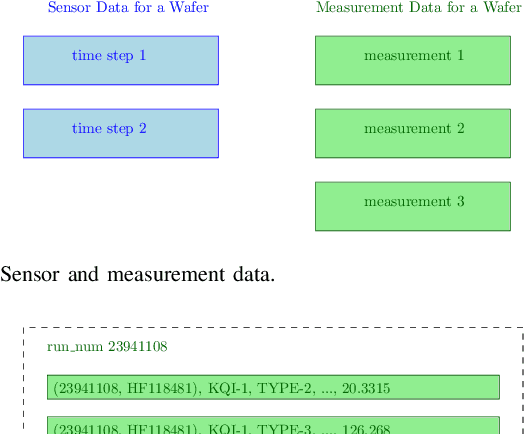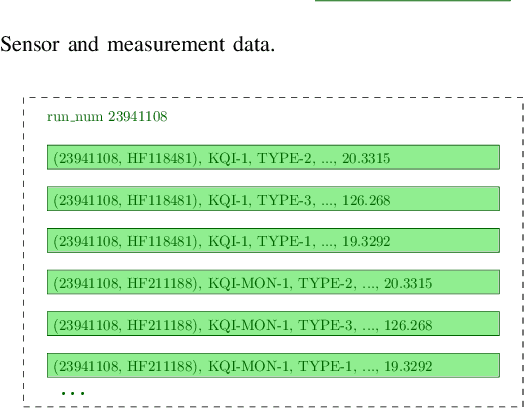Angzhi Fan
Soft Sensing Regression Model: from Sensor to Wafer Metrology Forecasting
Jan 21, 2023



Abstract:The semiconductor industry is one of the most technology-evolving and capital-intensive market sectors. Effective inspection and metrology are necessary to improve product yield, increase product quality and reduce costs. In recent years, many semiconductor manufacturing equipments are equipped with sensors to facilitate real-time monitoring of the production process. These production-state and equipment-state sensor data provide an opportunity to practice machine-learning technologies in various domains, such as anomaly/fault detection, maintenance scheduling, quality prediction, etc. In this work, we focus on the task of soft sensing regression, which uses sensor data to predict impending inspection measurements that used to be measured in wafer inspection and metrology systems. We proposed an LSTM-based regressor and designed two loss functions for model training. Although engineers may look at our prediction errors in a subjective manner, a new piece-wise evaluation metric was proposed for assessing model accuracy in a mathematical way. The experimental results demonstrated that the proposed model can achieve accurate and early prediction of various types of inspections in complicated manufacturing processes.
Detection Selection Algorithm: A Likelihood based Optimization Method to Perform Post Processing for Object Detection
Dec 12, 2022Abstract:In object detection, post-processing methods like Non-maximum Suppression (NMS) are widely used. NMS can substantially reduce the number of false positive detections but may still keep some detections with low objectness scores. In order to find the exact number of objects and their labels in the image, we propose a post processing method called Detection Selection Algorithm (DSA) which is used after NMS or related methods. DSA greedily selects a subset of detected bounding boxes, together with full object reconstructions that give the interpretation of the whole image with highest likelihood, taking into account object occlusions. The algorithm consists of four components. First, we add an occlusion branch to Faster R-CNN to obtain occlusion relationships between objects. Second, we develop a single reconstruction algorithm which can reconstruct the whole appearance of an object given its visible part, based on the optimization of latent variables of a trained generative network which we call the decoder. Third, we propose a whole reconstruction algorithm which generates the joint reconstruction of all objects in a hypothesized interpretation, taking into account occlusion ordering. Finally we propose a greedy algorithm that incrementally adds or removes detections from a list to maximize the likelihood of the corresponding interpretation. DSA with NMS or Soft-NMS can achieve better results than NMS or Soft-NMS themselves, as is illustrated in our experiments on synthetic images with mutiple 3d objects.
 Add to Chrome
Add to Chrome Add to Firefox
Add to Firefox Add to Edge
Add to Edge